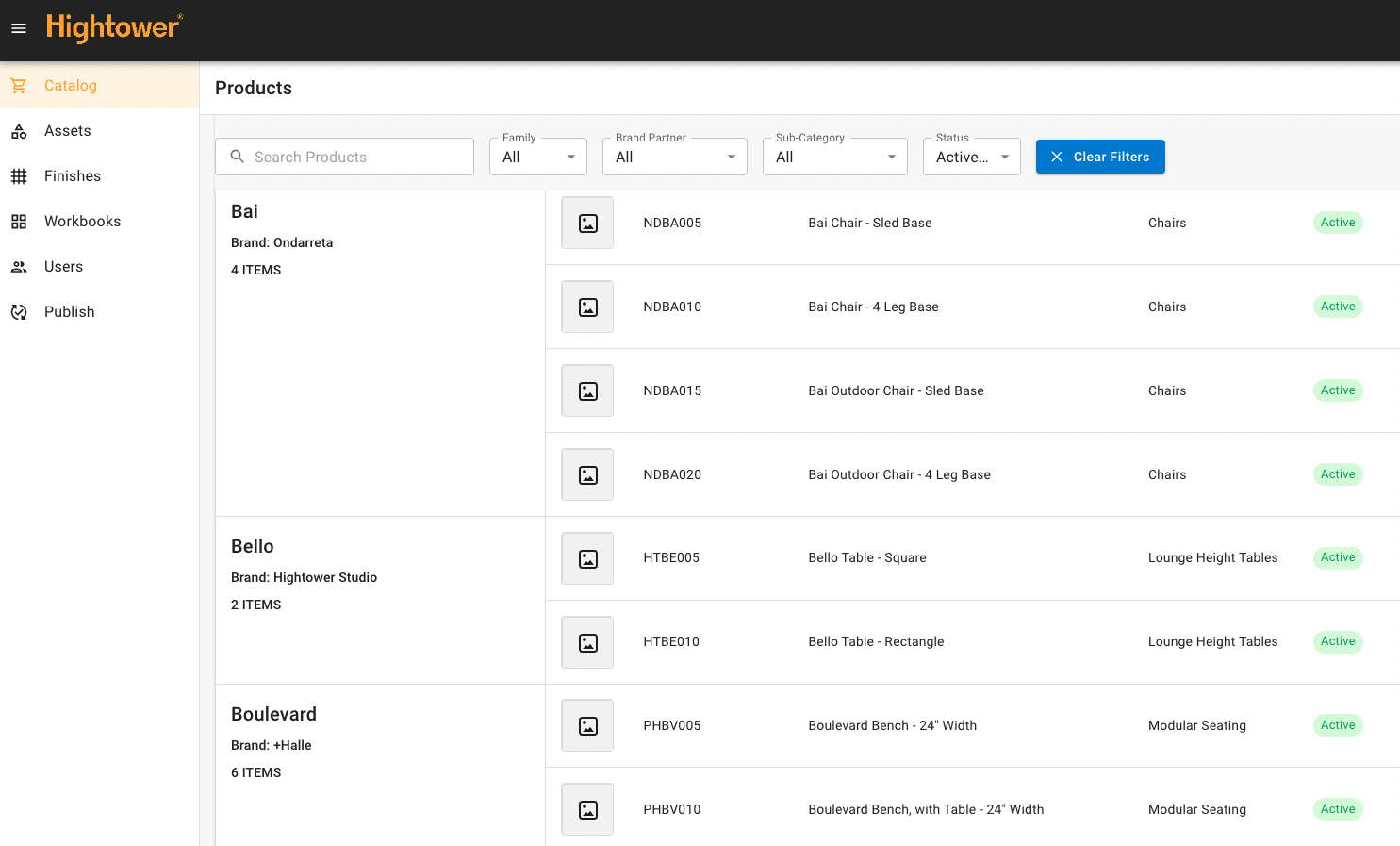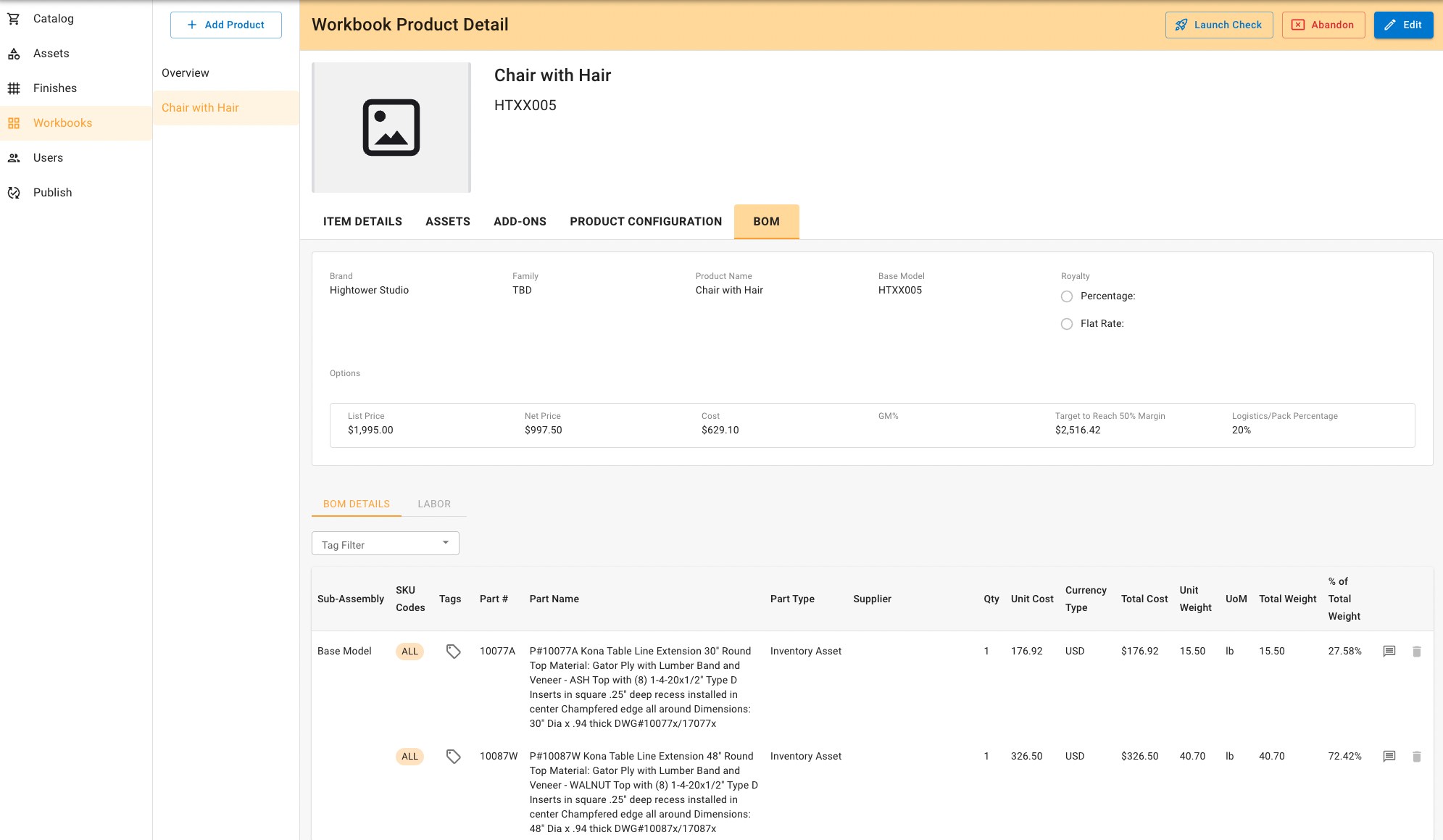Data infrastructure & technology integration
At Hightower, as part of the new website development, I led the strategy and execution along with change management process of a company wide data infrastructure redesign along with the development and launch of two new websites and complete data integration across 3 platforms. At the time, Hightower had multiple model numbers structures that were being used across the organization making it impossible to process and analyze sales and inventory data. Additionally, the multiple data structures were incompatible with the Shopify business rules required for inventory setup.
In partnership with Bluedge, a Shopify design and development agency, and AltSource, a custom software development agency, we set forth to first create a new Product Taxonomy based on a Base Model + Finish Options format. The new format provided valuable information such as brand, product family and style along with distinct finish codes providing exact color and material. Over 60,000 SKUs were updated to reflect the new model. This new inventory list provided Hightower visibility into their entire portfolio offering at the finish level for the first time in company history. The team also worked with our NetSuite partners to update all other relevant product data fields to ensure a seamless integration across platforms: Shopify, NetSuite and a custom Product Management System (PCM).
This project was unique in that development of the inventory list was done simultaneously with the development of the Hightower Shopify customer facing website and the internal PCM. The internal PCM was an integral part of the technology strategy as it became the “source of truth” hosting all relevant product data and information that would then feed Shopify and NetSuite. This was a major shift from the previous technology plan, where none of the platforms were integrated and all 3 sites hosted product data on different levels (family level, base model level and finish level). Streamlining the data to be consistent across platforms and integrating them significantly reduced employee time on updates or new product launches and it reduced the risk for human errors. With the completion of the PCM and data structure refresh, the team are now able to build new business intelligence databases providing sales, marketing, customer service and operations real time data and insights on quoting activity, sales, inventory levels, and visibility into order status providing quicker and more accurate information to customers along with better information for improved decision making.
A quick summary of what we accomplished in this project:
Data infrastructure redesign to allow for improved data collection and analysis
Updated Product Taxonomy leveraging a Base Model + Finish Options format
Semi-custom Shopify website to provide an ecommerce experience and leverage a growing platform invested in B2B online sales
Custom Product Content Management (PCM) system that became the “source of truth”, hosting all relevant product data and information for over 60,000 SKUs
Complete integration of the Shopify site, NetSuite and PCM reducing employee time spent on separately updating platforms and reducing risk from human error


